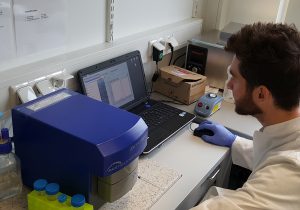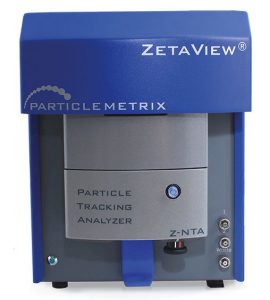What are Exosomes?

Exosomes are a type of extracellular vesicle (EV) with a diameter ranging from 50nm to 200nm. Exosomes were once thought to be little more than a way for cells to offload waste, but over the last decade scientists have discovered their outstanding potential.
These extracellular vesicles are released by cells, acting as messengers and tissue re-shapers. These tiny transporters carry cargo such as RNA, proteins, lipids and DNA. They are involved in a range of both health and pathogenic processes including cancer, inflammation, immunity, CNS function and cardiac cell function to name a few.


Exosomes have been found in blood, urine, amniotic fluid, breast milk, malignant ascites fluids and seminal fluids. They contain distinct subsets of molecules depending upon the cell type they’re secreted from, making them useful for bio-marker discovery.
What does the future hold for exosomes? Currently there is extensive investment into the research of exosomes, due to the future advancements the scientific community believe they will offer to modern medicine. Thanks to their role in fundamental mechanisms of intercellular communication, signalling and regulations, exosomes are predicted to have a crucial role in clinical and diagnostic applications.
Exosome specialists use Nanoparticle Tracking Analysis (NTA) to measure hydrodynamic particle size, zeta potential, and concentration – both in scattering and fluorescence modes – whilst researching these extracellular vesicles. One of the most renowned pieces of scientific instrumentation within this field of study in ZetaView® system from Particle Metrix.


About the ZetaView® system
The ZetaView® is a Nanoparticle Tracking Analysis instrument for measuring hydrodynamic particle size, zeta potential, concentration and fluorescence of exosomes and other nanoparticles.
With NTA, you measure what you see. Each individual particle in the field of view is counted and tracked in short video clips, creating accurate concentration calculations and particle size distributions. The ZetaView® combines these measurements with classical micro-electrophoresis, for determination of zeta-potential. All of these parameters can be measured both in scattering mode and in fluorescence mode, for characterisation of fluorescently-labelled sub-populations. The result is one compact instrument capable of measuring size, concentration, zeta-potential and fluorescence.
The main advantage of the ZetaView® system is that the optical setup is movable. The laser and microscope objective can be moved both synchronously and independently, allowing completely automatic alignment and focussing, plus ‘scanning-NTA’ – measuring at 11 different positions in the sample cell to give robust and representative statistics.
The ZetaView is now also available as a Twin-Laser system, for deeper investigation of exosome populations using fluorescent labels and dyes.
Find out more about the ZetaView® system by clicking the button below:


